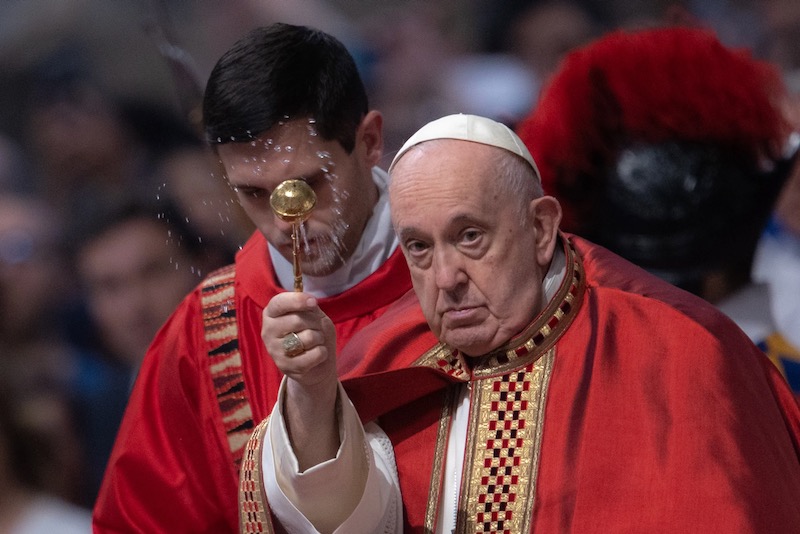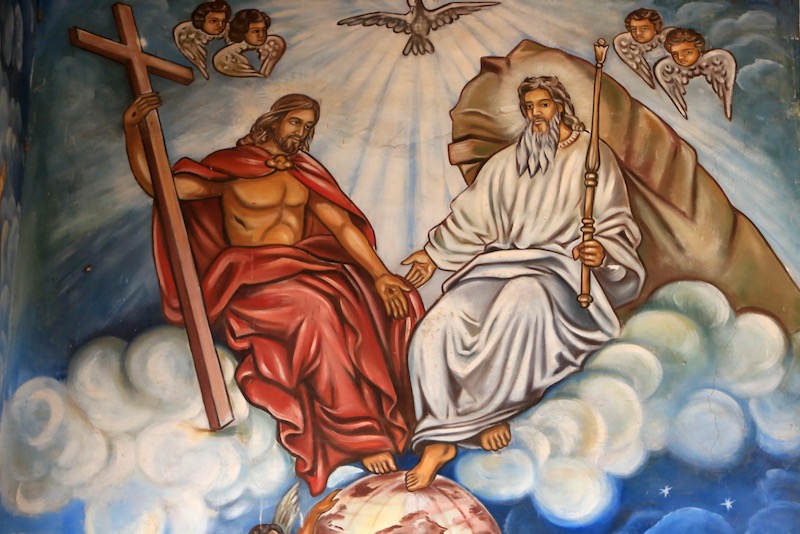Trinity Sunday is unlike any other feast in the Christian calendar. Other feasts celebrate a saint, a church, an event, or an aspect of divine revelation, but this Sunday’s feast celebrates God Himself, the beginning and end of everything that exists and of existence itself. The defining Christian doctrine of the Trinity celebrates that fact that God is not only the creator of everything, but the lover of all he has created. It affirms that creation is an act of love by Love Itself. It is, in other words, an explicit celebration of what makes the gospel the good news that it is. Love implies relationship and the heart of the gospel is the affirmation that we have been created to share in that relationship of love which is God, Father, Son and Holy Spirit, the Blessed Trinity.
Many older Catholics will have first heard of the Trinity in the story told of Saint Patrick, who used a shamrock, with its characteristic three leaves, to teach that God is both one and three. But the early Church Fathers, especially the fourth century Cappadocians, used another image to describe the Trinity, namely, a dance, perichoresis. The word is still used for a dance at Greek weddings, in which three people (at least) dance in ever faster circles, weaving in and out of one another in perfectly synchronised movements. In time, the dance becomes so fast and yet still so rhythmically harmonious, that the individuals appear to merge into one. These early Church Fathers used the word to describe the relationship of mutual, indwelling love that unites Father, Son and Holy Spirit. The Trinity, in other words, is what we mean when we say that God is love; and love is what we mean when we say that God is a trinity or communion of “persons”. Scare quotes are needed because the notion of “person” that was used when the doctrine was first formulated is not our modern understanding of the word. In fact, it is almost the opposite. For us, the word “person” denotes an individual subject, a distinct centre of consciousness, will and knowledge. But the word used by those who first articulated the doctrine of the Trinity might better be translated as “role”. The original Greek word of which the Latin, persona, is a translation, prosopon, meant both a role in a play and the mask that designated the role being played, and which helped to amplify the voice of the actor. As well as being distinct, a role is defined in interdependent relation to the other roles; so, in its original sense, “person” implies relationship or, better, “relatedness”.
The Christian doctrine of God asserts that God is a Trinity of divine relationships or “relatedness” itself. It follows that if, as we believe, human beings are fashioned in the image and likeness of God, we are fashioned in the image of likeness of the Trinity. “Relatedness” is intrinsic to our human nature, as it is to God’s nature. How we use the word “God” thus has a direct bearing on how we understand ourselves and what it is to be human: a faulty usage and understanding inevitably leads to an equally faulty understanding of ourselves. The inscrutably partial God of Calvinism, the implacably cross God of Jansenism, and the remotely mechanistic God of Deism have all helped to shape the “god” that was so rightly rejected by Marx, Nietzsche, and Freud, and which is still rightly rejected by many clearminded, conscientious, contemporary atheists.
These and other different distortions of the Christian understanding of God have undoubtedly shaped our modern (and postmodern) understanding of ourselves, especially the insidious dualism that has bedeviled much Western philosophy and theology, as well as the tendency to see ourselves exclusively in terms of either individualism or collectivism. The doctrine of the Trinity, on the other hand, affirms that, in Christ, we share in God’s life by living our lives in love or “relatedness”. Our lives are grounded in the Trinity: “We belong to it.”
Like all doctrines, of course, the doctrine of the Trinity is ineluctably lodged in language; and therefore, like all doctrines, it suffers from the limitations of language. Words that attempt to describe the indescribable inevitably teeter on the brink of nonsense. But, as Wittgenstein might have said, there is such a thing as important nonsense. How God is one and three will remain forever beyond our comprehension: and yet over time the Church came to see that to say anything less is to fail to speak well of God. But, as the Anglican theologian, Austin Farrer (1904-68), said, “We can’t think the Blessed Trinity; but then it’s not required of us to think it. We can do better: we can live the Trinity by the grace of the Trinity.” The doctrine of the Trinity, then, enables us not so much to know about God, as to know Him with the kind of knowledge that is privy only to love. The former is information, the latter relationship. It is to know that, in Christ and through the gift of the Spirit, we will be taken up into the life of God and share in divinity itself. As St Athanasius (d.373AD) says, and Aquinas echoed, “God became human so that humans might become God.”4 To believe in the Trinity, then, is to believe that God is the selfforgetting and self-giving relatedness that we know as love. In that sense, the doctrine is an explication of the simplest of all Christian credal statements, first articulated by St John in his first letter: “God is love, and he who abides in love, abides in God.” Only in the doctrine of the Trinity do we grasp fully God’s beauty, goodness and loveliness. Far from being an intellectual abstraction to tantalise the mind, the doctrine is given to us “to ravish the heart.”



 Loading ...
Loading ...
What do you think?
You can post as a subscriber user ...
User comments (0)